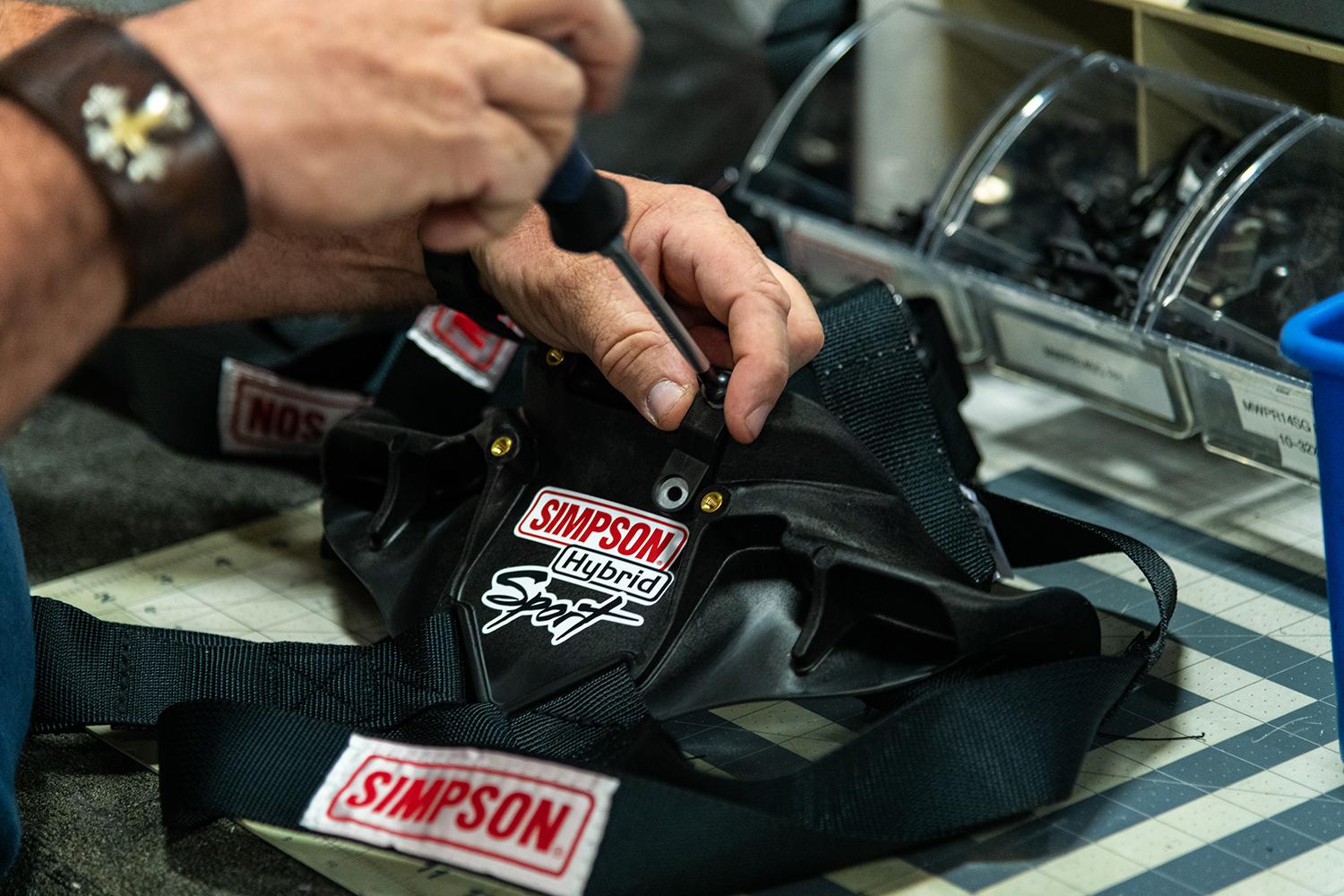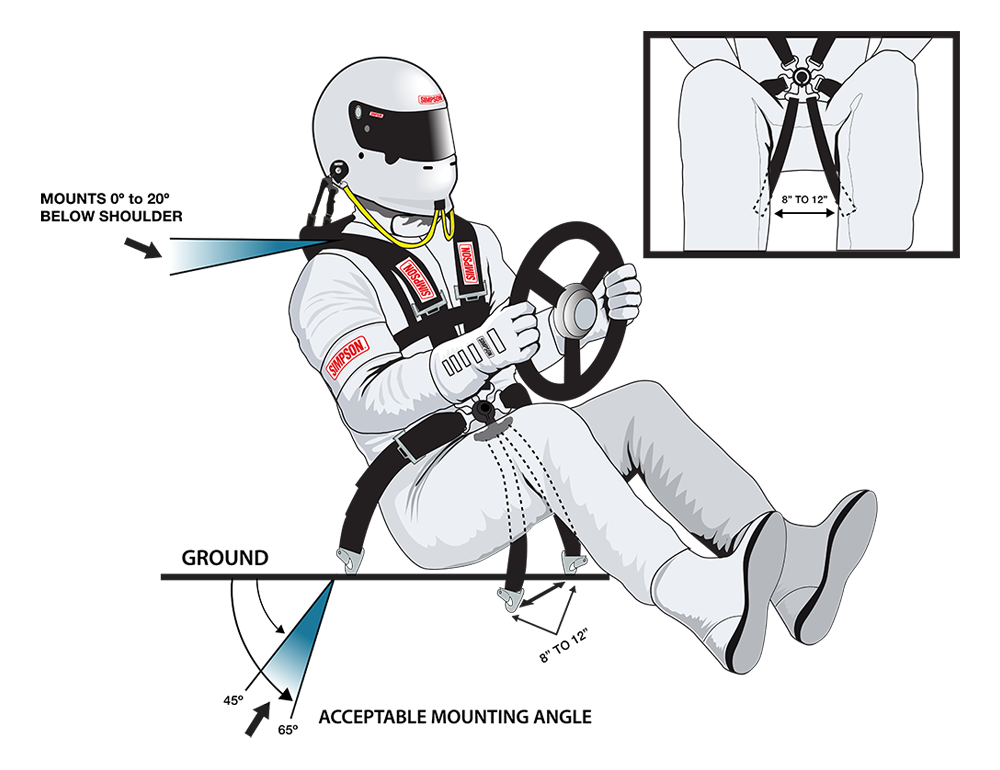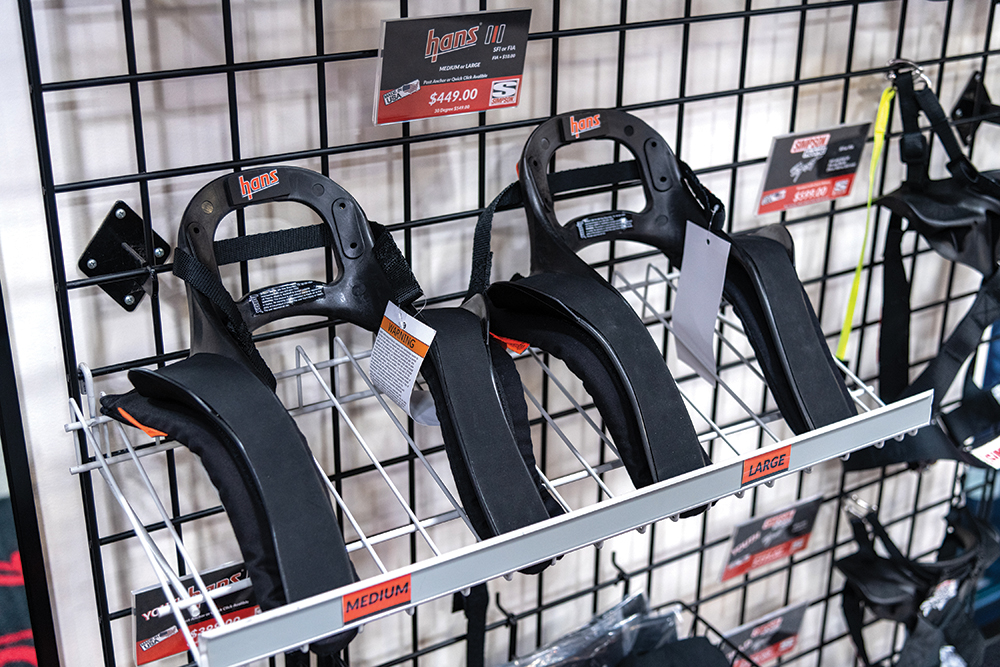Stop Doing That…Do This Instead: Fitting a Frontal Head Restraint

While this critical device improves driver safety, several important factors will determine optimal performance.
The original HANS (head-and-neck support) device was developed to prevent drivers from sustaining basilar skull fractures by maintaining the relative position of a driver’s head, neck, and body during a frontal impact. As other companies entered the market, the general term for these devices has been head-and-neck restraint (HNR); but Jay Braxton of Simpson Performance Products in Mooresville, North Carolina, said it’s more accurate to refer to them as frontal head restraints (FHR).
“Some racers have incorrectly believed an FHR could provide protection in side impacts,” Braxton explained. “While they help ever so slightly, they provide no real protection in a side impact. They are designed to prevent the basilar skull fracture, historically the leading cause of race car driver fatalities. They work in 0- up to a 30-degree-offset frontal impact. The only pieces of equipment that protect drivers in side impacts are full-containment seats with a proper head surround or driver’s side nets. A correctly set up driver safety system (seat, belts, FHR) offers the best chance for preventing injury or worse.”

Before FHRs were mandated, some racers were slow to accept them. But acceptance did grow, particularly among racers young enough that the FHR had always been as much a part of their safety gear as a helmet and gloves.
“That’s one of the reasons we came up with a child device,” Braxton said. “It was important that they start using it when they start racing. It’s a lot easier to get your kid to start doing their homework in first grade than it is in tenth grade.”
Yet, some racers still have fitment problems with FHR devices. “The number-one issue we still see today is incorrect shoulder belt mounting when it comes to not only the use of FHRs, but for driver safety, period,” Braxton said. By “incorrect,” he is referring to the proper mounting angle for the shoulder belts. “Thirty years ago, drivers wanted to mount them about halfway down the back of the seat. They basically came up and over the driver’s body at about 90 degrees. Drivers did that because they wanted to feel like they were pulled down into the seat. But what that does, especially with an FHR, in a frontal to offset-frontal impact, the driver’s body wants to rotate inside those belts, so instead of holding the body back, it’s still allowed to rotate downwards.”
Instead, the shoulder belts “should come over the device and mount at a 0- to 20-degree angle,” Braxton said. “This ensures both a most effective use of the FHR shoulder pad friction in an event, and maximum comfort for the user. Seatbelt harnesses mounted too low can cause compression in the spine, while harnesses mounted too high will not engage the FHR shoulder friction in the event, which is required for the FHR to work properly.”

Braxton has also fielded questions from racers about the horizontal helmet tethers that are specific to HANS devices.
“They would put a HANS on and attach it to their helmet, and we’d get the call: ‘I don’t think these tethers are short enough. I can still touch my chin to my chest. I can still move my head.’ We’d explain that you should still have a complete range of head movement. In an accident, at the beginning of the event their head isn’t swinging forward. First it stretches out forward and then it swings down. Because of the way the HANS is made, in an impact, as the belts stretch and the driver’s body moves forward, the friction of the belts in the device pretty much holds it in place. The driver almost moves out from under it. At the end of the event the tethers have become taut.”
CLICK HERE TO LEARN HOW TO PROPERLY INSTALL HELMET TETHERS AND MAKE ADJUSTMENTS WITH TREVOR ASHLINE AND JAY BRAXTON OF SIMPSON PERFORMANCE PRODUCTS.
This is not the case with a Simpson Hybrid device, Braxton pointed out. “Because the hybrid is attached to the driver’s body and it moves with him in an impact, it is very important that the tethers be adjusted so that while the driver is sitting stationary in the seat, if they stick their head forward, almost like a chicken, they should feel the tethers catch at the furthest point they can stick their head out. Both tethers, once adjusted, should make the shape of a triangle.”
Braxton noted that FHR products “are the only piece of driver safety equipment that don’t have a fixed life span. While needing to be recertified every five years, they can be used for a racer’s entire career. From a mile-per-dollar perspective, they are the least expensive piece of driver safety equipment a racer will ever own. If it saves you a trip to the ER or worse, it has paid for itself many times over.”
SOURCE
–
Simpson Performance Products
teamsimpson.com
 MEMBERSHIP LOGIN
MEMBERSHIP LOGIN JOIN PRI
JOIN PRI


